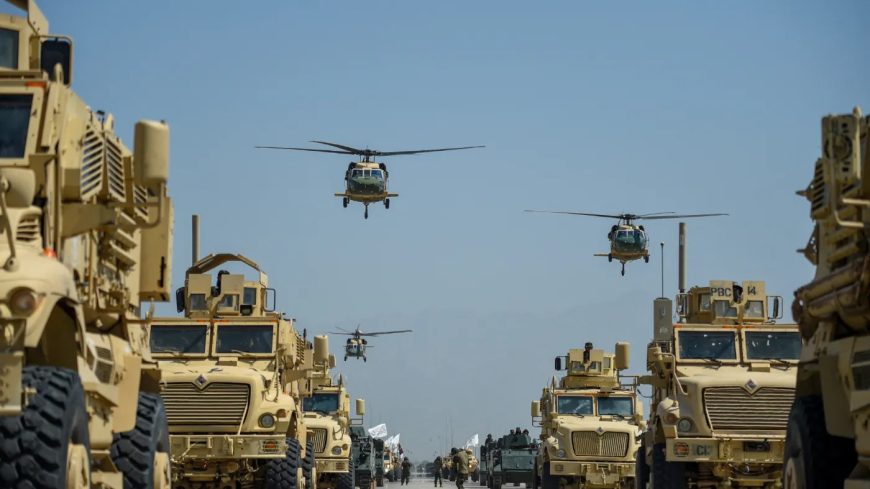The Entry of U.S. Troops into Bagram Airfield and Its Impact on the Struggling American Economy
The renewed deployment of U.S. troops to Bagram Airfield in Afghanistan has military and political implications, but it could also have profound effects on the economy and daily lives of American citizens. This report explores this issue and the associated costs.

The return of U.S. troops to Bagram Airfield in Afghanistan represents a strategic point in the foreign policy of the United States, impacting not only military and political dimensions but also having significant economic and social implications for American citizens.
Bagram is recognized as one of the most important U.S. military bases in Afghanistan. Located 1,600 kilometers from Iran and 643 kilometers from China, it allows the U.S. to monitor military activities in both countries. Additionally, its distance of 1,287 kilometers from Gwadar Port in Pakistan—a key point in China’s Belt and Road Initiative—further underscores its strategic importance.
The base is equipped with advanced facilities, including surveillance systems, extensive logistical centers, and cyber units. These capabilities enable the U.S. to oversee military activities in neighboring countries and conduct special operations if necessary. However, this military presence may also come with challenges that could jeopardize regional stability and increase tensions.
The presence of American troops in Bagram incurs significant costs for the U.S. government. Military expenditures in Afghanistan have exceeded $2 trillion since the war began in 2001. These costs not only place a heavy financial burden on the government but also create additional pressure on American taxpayers due to the ongoing economic crisis and rising national debt.
Continuing these expenses could lead to reduced investment in other sectors such as healthcare, education, and infrastructure. In a context where the U.S. economy is already under pressure from high inflation rates and economic inequalities, military spending can act as a serious barrier to sustainable economic growth. Specifically, increasing taxes to cover military costs may lead to public dissatisfaction and heightened social tensions.
The U.S. military presence in Bagram also directly affects the lives of American families. The deaths of young Americans in wars and military operations not only cause pain and suffering for families but also raise concerns about the future of the nation’s youth. Statistics show that many families experience psychological and financial difficulties due to the deaths or injuries of their loved ones in conflicts.
Moreover, U.S. military policies globally can lead to new crises that impact the daily lives of citizens. For instance, rising tensions in the Middle East and Asia can result in fluctuations in oil prices and other goods, negatively affecting families’ livelihoods.
The U.S. presence in Bagram also poses challenges for other countries such as Iran and China. For Iran, this presence could strengthen terrorist groups and jeopardize the security of its eastern borders. For China, increased U.S. oversight of the Belt and Road Initiative could raise its security costs and consequently have negative economic repercussions for its growth.
Ultimately, the renewed deployment of U.S. troops to Bagram is a strategic action that carries heavy economic and social costs for the United States. This move not only contributes to rising national debt and imposes pressure on taxpayers but also affects the daily lives of American citizens. Given the security and economic challenges arising from this presence, it is crucial for American politicians and decision-makers to carefully consider the long-term impacts of these policies on the economy and the lives of the people. Addressing domestic needs and prioritizing economic issues can lead to the creation of a more stable and secure society for American citizens.











